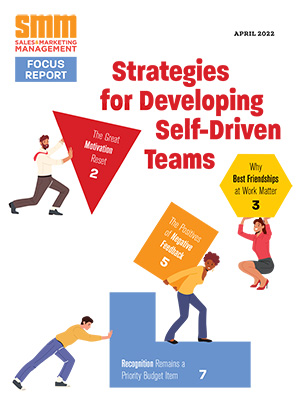A new logo and tagline may be among the deliverables of a B2B branding process, but they aren’t the sum of the process, says Kara Jensen, creative principal of Bop Design, a San Diego-based full-service B2B branding firm. Jensen says businesses tend to either undervalue or overthink their brand. To help make the entire process smoother for B2B businesses, Bop Design compiled a list of 10 Do’s and Don’ts of Branding.
1. Consider your audience. The best place to start is by considering and analyzing your ideal client. Who are they? What are their needs and challenges? Clearly define your audience and their pain points. Knowing whom you are marketing to enables you to appeal to them in your strategy.
2. Focus on your strengths. This sounds like a no-brainer, but sometimes companies can’t clearly articulate their strengths. It’s absolutely essential to determine what your firm’s strengths are and how they add value for clients. Get input from your sales team, customer service team and management. Once you have a comprehensive list, cut it down to a maximum of five strengths and ensure they are all relevant to your clients.
3. Create a strong mission statement. Settling on the strengths and values of your business will help you write and refine your mission statement. It must be concise and specific — the mantra of your firm.
4. Be consistent. As you continue to craft your brand marketing strategy, your key to success is consistency. For example, if you are focusing on “efficiency,” make sure you carry that message throughout all your brand-related pieces. The very nature and layout of all your marketing and sales material should portray the feeling of “efficiency.”
5. Differentiate yourself. Your firm, employees, services and model are unique. In a world of options, potential clients need to clearly understand what differentiates you from your competitors.
6. Don’t rush the process. Branding or refreshing a brand can be a streamlined process, but it still requires informed input and creativity. Firms going through a B2B branding process risk creating a lackluster, vague brand when they hurry.
7. Don’t try to please everyone. Effectively managed businesses employ a diverse group of individuals. While this is great for innovation and ideation, it’s not always conducive to collective agreement. When it comes to branding, a lot of people in your company will have an opinion. However, at the end of the day, only a few of those opinions really matter. Identify the main stakeholders in the branding process and ensure they have final decision ability.
8. Don’t say you offer something you don’t. This is another common sense statement that doesn’t always seem obvious. Typically, when someone is trying to say they offer something they don’t, it’s not always to be deceptive. In many cases, they like how it sounds and think it’s what the client wants to hear. These people often think they have the best product or service on the market and they can later convince a client of its worth. This tactic is dishonest and usually fails, causing mistrust in your brand.
9. Don’t copy the competition. Even if your competition has great ideas and strategies, never copy them. Copying a competitor makes it look like you don’t bring anything new or different to the market and does nothing to make you stand out.
10. Don’t minimize the importance of branding. A product or service is rarely so great that it sells itself. Even industry giants like GE, Apple, Microsoft and Sony value and promote their own brands. Your branding and service or product often become inextricably linked, so creating and upholding a strong brand ensures the image of your products or services is strong as well.
Common issues come up during the B2B branding process, but they can be avoided or quickly managed by understanding how they detract from the process. By keeping these do’s and don’ts in mind during your B2B branding project, you can streamline the process and create a great result.



